Hungary impresses visitors with its vibrant and photogenic capital Budapest. Yet even that capital hints at what else there is to be enjoyed beyond its urban charms, as it’s made up not just of bustling Pest on one side of the Danube River but also the rolling hills of Buda on the other. In fact, those Buda Hills contain one stretch of a much longer hiking path that cuts across the country and was the first official long-distance hike in Europe. Established in 1938, the National Blue Trail, or Kéktúra, passes fertile countryside, vineyards, palaces, and the most stunning sections of the Danube. Well known among Hungarians, the Blue Trail is only now gaining international attention. Here’s what you need to know about walking Hungary’s beloved path, and some highlights to expect along the way.
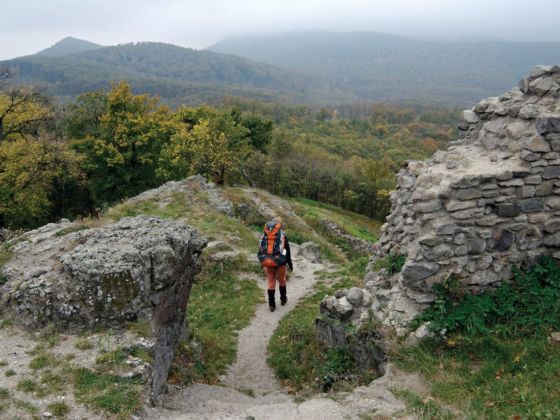

Find History, Heritage, and Beauty on Hungary’s National Blue Trail
The Kéktúra traverses Hungary
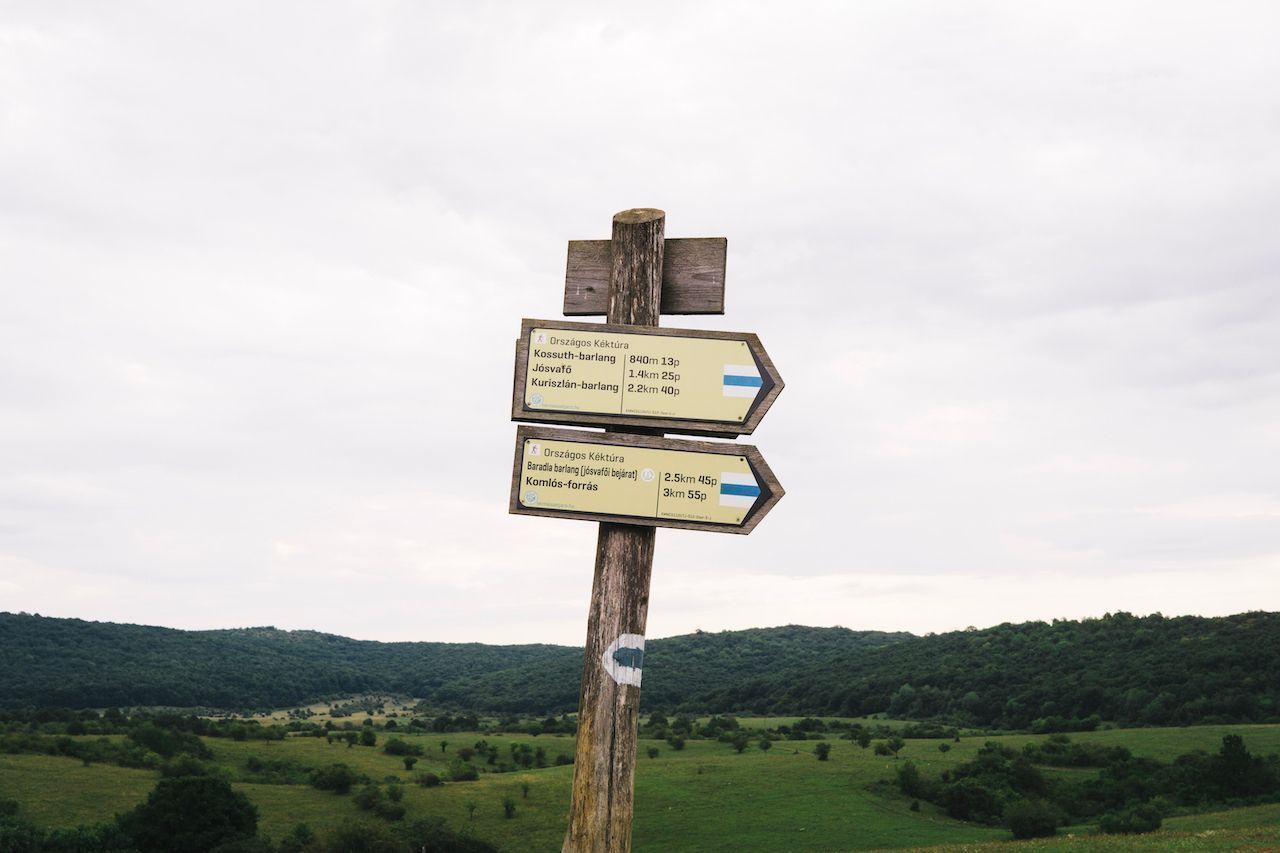
Photo: bSmart/Shutterstock
The National Blue Trail is 1130 kilometers, or 700 miles, and runs from the peak of Irottkő Mountain on the Austrian border in the west to the small village of Hollóház near the border with Slovakia in the northeast. The National Blue Trail also forms part of the E4, a European long-distance trail that runs from Portugal to Cyprus.
Situated in the lowlands of the Carpathian Basin, Hungary is mostly flat with a few mountain ranges in the north, namely the Transdanubian Mountains and North Hungarian Mountains. The highest point in the entire country and on the trail is only 3,327 feet. You won’t find dramatic peaks and steep ascents here but rather gently undulating hills and easy terrain. This makes the National Blue Trail not as strenuous as such renowned long-distance hikes like the Pacific Crest Trail or the New Zealand’s Great Walks. The low altitude and moderate difficulty make it accessible to almost anyone with a reasonable level of fitness.
The trail takes you on a rewarding adventure through Hungary to its varied terrain and unique sights. Expect vast deciduous forests, historic villages, rolling hills, thermal lakes, wine regions, Lake Balaton, several national parks, capital city time in Budapest, ancient castles, and ruined fortresses.
What to know before you go
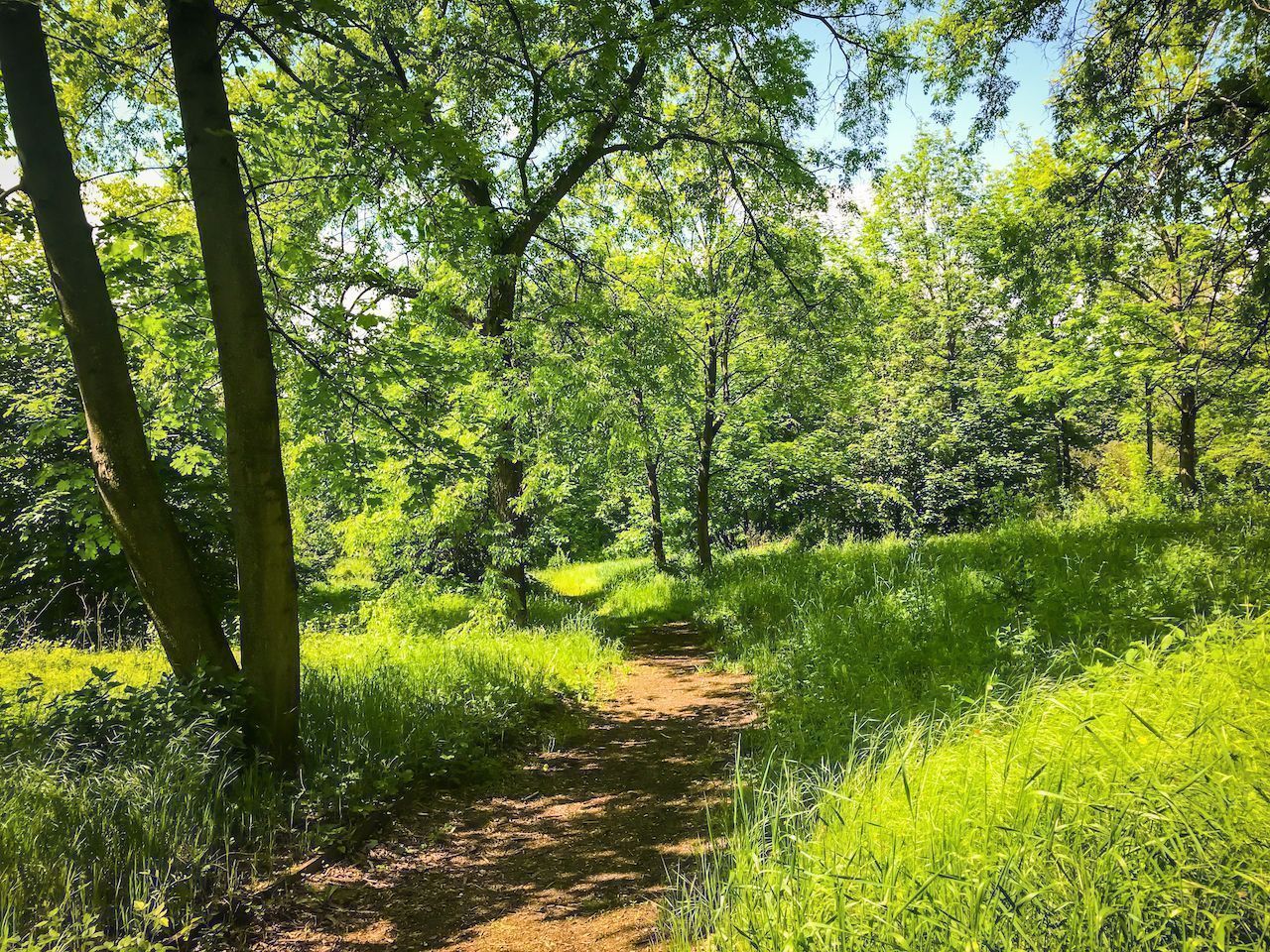
Photo: Benerys/Shutterstock
The trail takes about 57 days to complete. To be an official finisher and earn a Blue Trail Badge, you need to get yourself a Blue Trail Passport beforehand and stamp it at 147 checkpoints along the trail. You’ll find these stamps in metal boxes on trees, fences, and walls along the path. The checkpoints are numbered from west to east, but the trail can be completed in any order and over any length of time. So even if you don’t have the time to do it all in one go, you can hike it in stages over several months or years and still earn the coveted badge.
No permits are required to hike any length of the trail. These paths can be freely traveled by anyone, and you will find many locals enjoying day hikes along the route, especially on weekends. The most popular times on the trail are in August and September when the weather is warm. The fall months from September to November are particularly beautiful, as the leaves change into their fall colors.
You also won’t have to haul weeks’ worth of food and water with you in your backpack. Every day the trail passes through villages, which have small shops with basic supplies. You’ll be able to stock up on fresh bread, Hungarian salami, pastries, fresh fruit, and granola bars. Bigger towns have supermarkets and restaurants, too, so you’ll have plenty of opportunities to refuel with some goulash, Hungary’s best known national dish. Most shops will be closed on Sundays, so bear that in mind when meal planning. As for water, there are plenty of public water fountains for drinking water and filling up a CamelBak or bottle along the way.
Apart from Budapest and a few other major centers, you will struggle to find people who can speak and understand English well. Hungarian is a notoriously difficult language to learn, though it’s a good idea to know at least a few basic phrases before you go. At the very least, download a translation app on your phone. Even if you can’t communicate well together, you’ll discover that the locals are more than happy to help you along your way and even share with you some homemade pálinka, the traditional fruit spirit.
Accommodation on the trail
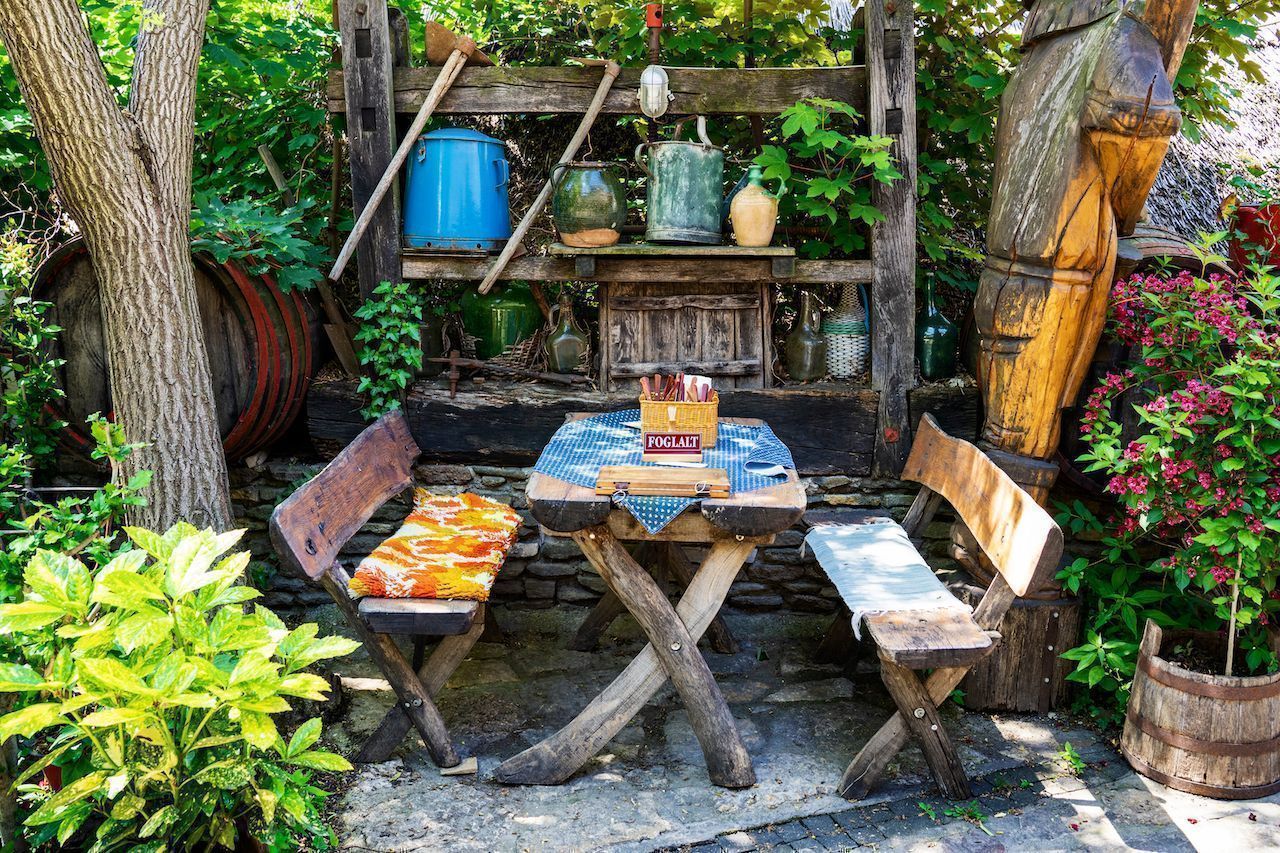
Photo: berni0004/Shutterstock
If you love camping, or are just looking to save on accommodation costs, you’ll be happy to learn that wild camping is legally allowed on public land in Hungary if you stay fewer than 24 hours. Note that wild camping is not, however, allowed in national parks. To keep a roof over your head, you’re spoiled for choice with accommodation along the route. Guesthouses, known in Hungarian as vendégház, offer simple rooms for as little as $7 to $20.
Getting there and navigating the trail
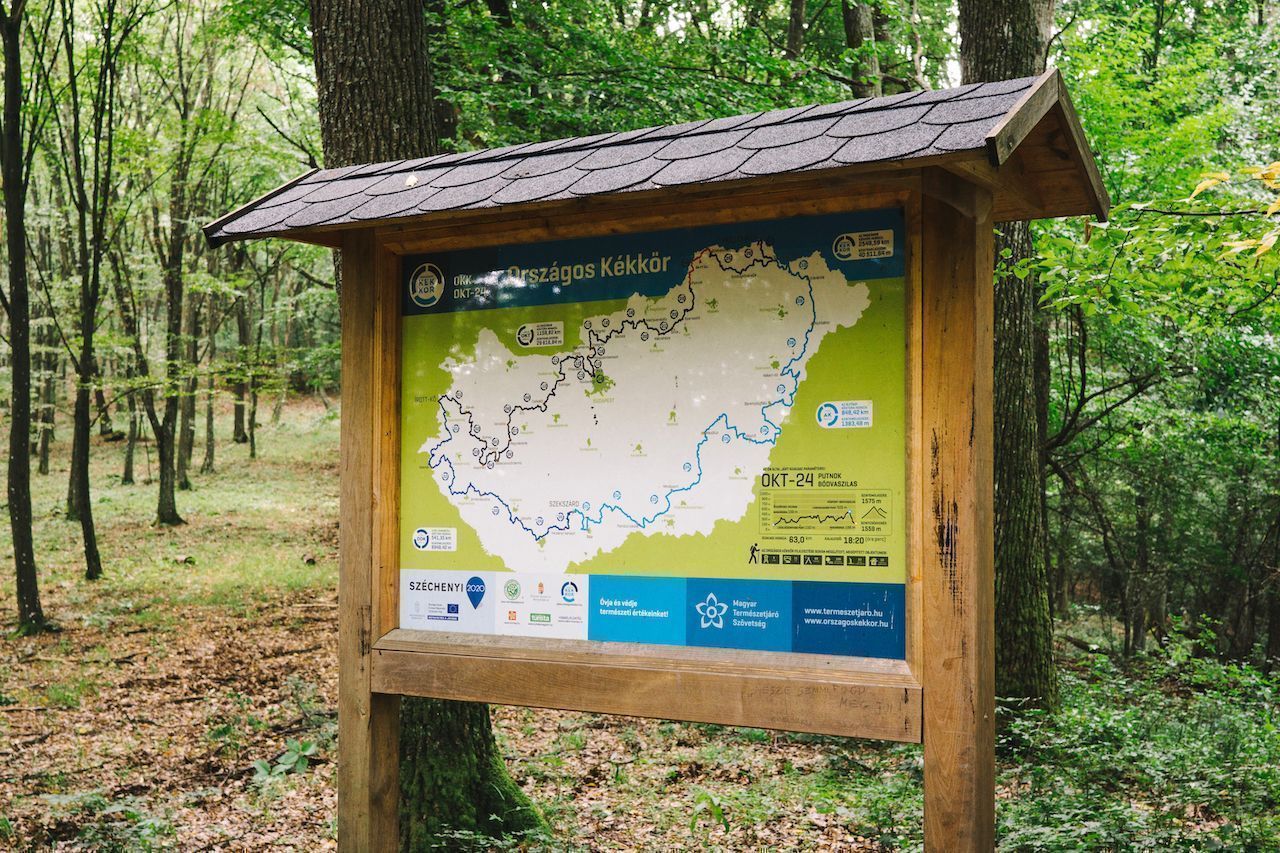
Photo: bSmart/Shutterstock
The National Blue Trail is operated by The Hungarian Hikers Association. The path is well maintained and marked by a horizontal blue stripe between two white stripes painted on trees, walls, gates, and fences all along the trail. Be sure to download their official free app, Természetjáró, for detailed descriptions and elevation profiles of each section, and a map that can be used for offline navigation.
Hungary has a comprehensive public transport network of trains and buses across the country. The start of the trail, Irottkő Mountain, is on the Hungarian-Austrian border and can be reached easily from Budapest. Trains depart from Keleti station several times a day; with one change you’ll get to Kőszeg, near the start of the trail, in 3.5 hours.
What to see (and photograph) along the way
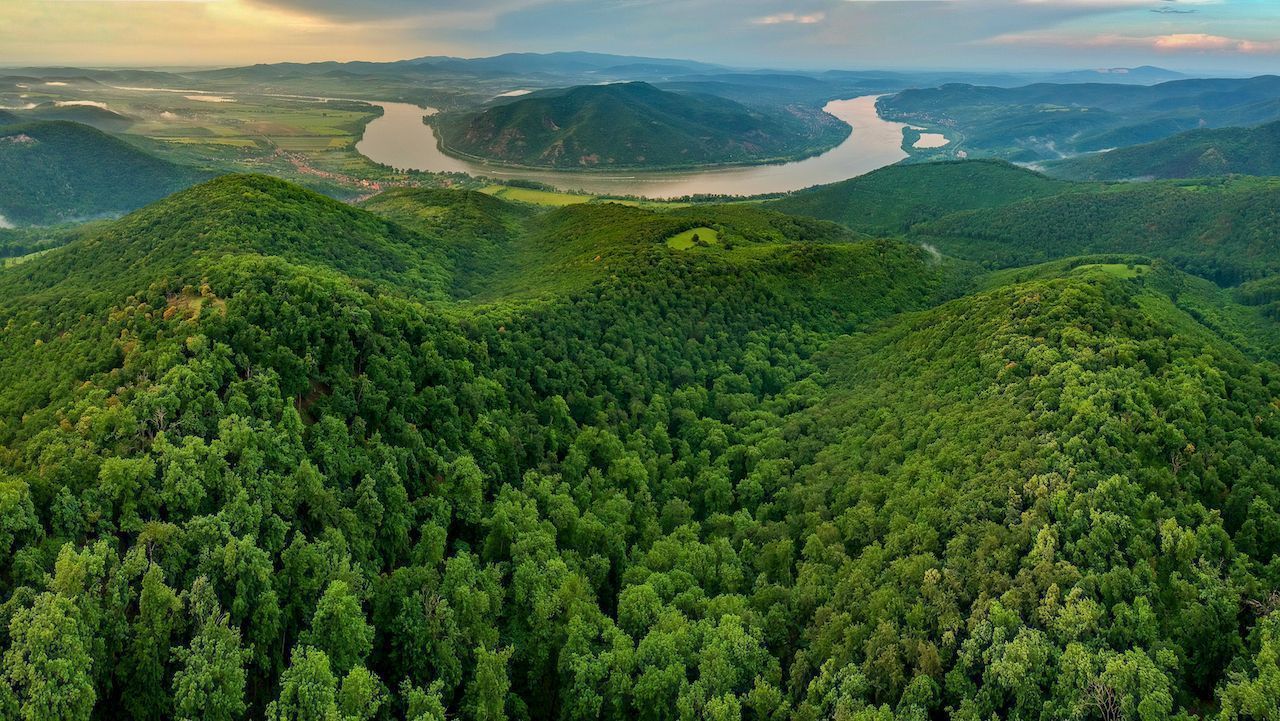
Photo: anderm/Shutterstock
Countless geological, historic, and scenic sights pepper the trail. The Természetjáró app has a detailed description of the highlights and attractions of each stage, but here are our choices of the top highlights of the trail to ignite your Blue Trail wanderlust.
Irottkő lookout tower
It’s here at the beginning of the trail where you get the first stamp in your Blue Trail Passport to officially begin your trek. The Irottkő mountain lookout tower sits exactly on the border, with the entrance on the Austrian side. It’s only since the early 1990s, post-Iron Curtain, that it’s been possible to climb the tower from the Hungarian side, and you can still sense the previous Cold War history as you look out over the two countries.
Kőszeg
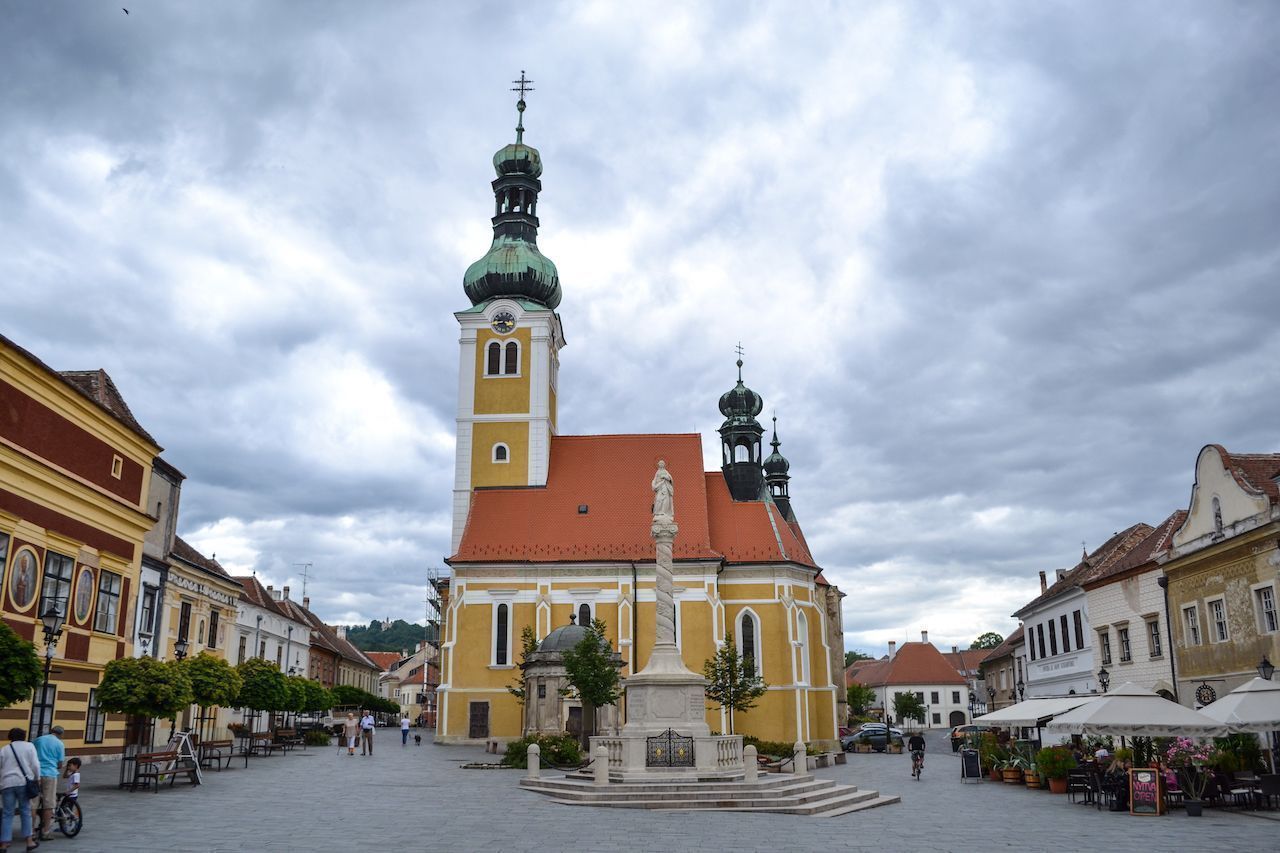
Photo: parlanteste/Shutterstock
Kőszeg, the first town the trail passes through, is worth taking some time to explore. It has a well-preserved historic center, medieval city walls, and the 13th-century Jurisics Castle, which was named after Baron Nikola Jurisic, who in the 1500 led a heroic defense of the castle against persistent Ottoman invaders.
Lake Hévíz
People travel from across Europe to soak in the world’s second-largest thermal lake. Lake Hévíz is known for its healing properties, which are due to the presence of calcium, magnesium, sulfur, and other minerals in the water. A soak here will definitely rejuvenate you after a long day’s hike.
Buda Hills
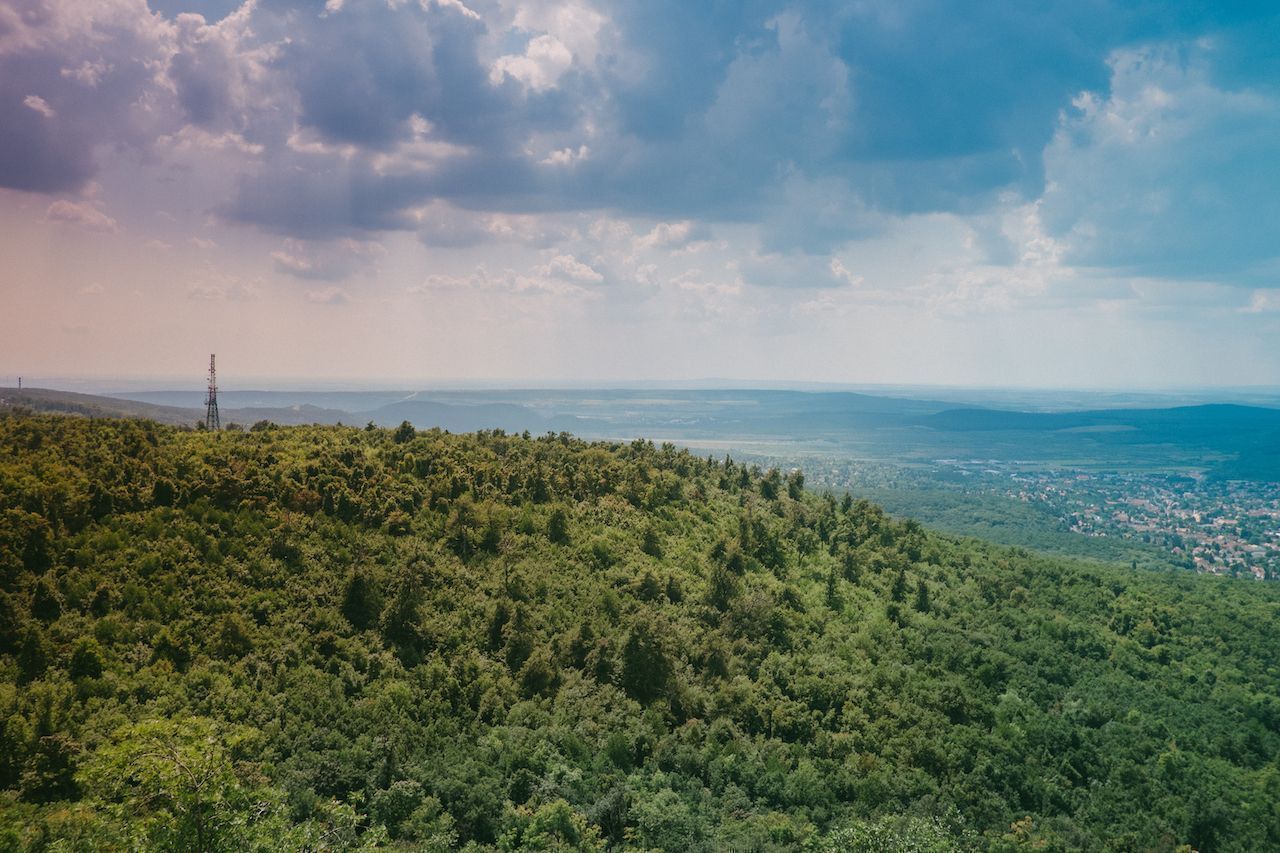
Photo: Federico Fioravanti/Shutterstock
The trail doesn’t take you into the hustle and bustle of central Budapest but skirts around it through the undulating Buda Hills. Climb the Erzsebet Lookout Tower in Normafa Park for great views of the city and the Danube. Among the many unique things to do here, you could take a ride through the forests on The Children’s Railway, a railway line run almost completely by children. If you do wander into busy Budapest, you could rest your tired muscles at one of its famed thermal spas or, if you’d prefer to recuperate over a beer, hit up one of the city’s iconic ruin bars.
Lake Balaton
Not far from Hévíz is the largest lake in central Europe, known affectionately as “The Hungarian Sea.” Locals flock to this striking aquamarine lake during the summer months for camping, sailing, and music festivals. The trail traverses the Balaton Uplands on the north shore of the lake and is one of the most scenic sections of the trail. This area was a hotspot for volcanic activity millions of years ago, and you will climb several extinct volcanoes on the trail. Locals and hikers alike enjoy the three wine regions here: Balatonfüred-Csopak, Balaton-felvidék, and Badacsony.
Visegrád Castle
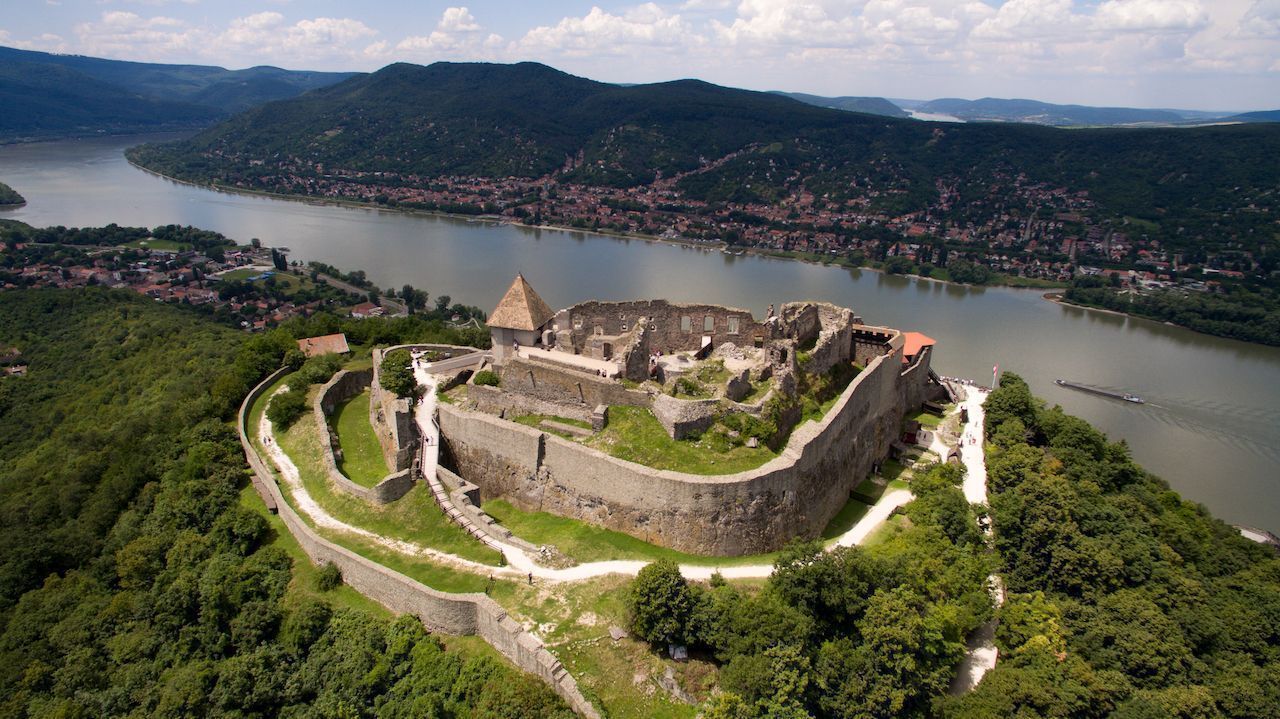
Photo: Gabor Tokodi/Shutterstock
Built in the 13th century, this hilltop citadel served as the residence of numerous Hungarian kings and the home of the Hungarian Crown Jewels. Its imposing walls and location high above the Danube alone are impressive, but inside you’ll also find interesting exhibitions on display. One of Hungary’s most popular historic festivals, The Palace Games, also takes place here every July.
The Danube Bend
At the Danube Bend, Dunakanyar, the Danube river takes a sharp turn between the mountains to become almost horseshoe-shaped before flowing southwards. Many people say that this is the most beautiful stretch of the entire river. The best view on the trail is from the Julianus Lookout Tower, where you have a fantastic panorama of the surrounding lush hills, Visegrad Castle, and the Danube Bend.
Hollókő World Heritage site

Photo: Inspired By Maps/Shutterstock
The enchanting old village of Hollókő is a UNESCO World Heritage site. This traditional agricultural settlement gives you a peek into what rural life was like in the 17th and 18th centuries. This is a living settlement still inhabited by the Páloc people, an ethnic subgroup of Hungarians with their own dialect and traditions. You can stop in the village to learn traditional pottery and weaving from the locals, try unique Páloc delicacies, and, if you are lucky with timing, experience one of their many annual folk festivals.
Mátra Mountains
These mountains are the highest in Hungary and the steepest section on the trail. It’s in this area that you will conquer the highest point in Hungary, Kékestető, at 1,014 meters (3,326 feet). Along the trail in these beech- and oak-covered rugged mountains, you’ll have the best chance of spotting wildlife like red deer, wild boar, wild cat, and salamander.
Aggtelek caves
The Aggtelek Karst cave system in Hungary and Slovakia is a UNESCO World Heritage site containing over 1,200 caves. The trail passes the entrance to the largest and most magnificent cave in the entire system, the 13-mile-long Baradla-Domica cave system, packed with eerie stalactites and stalagmites.